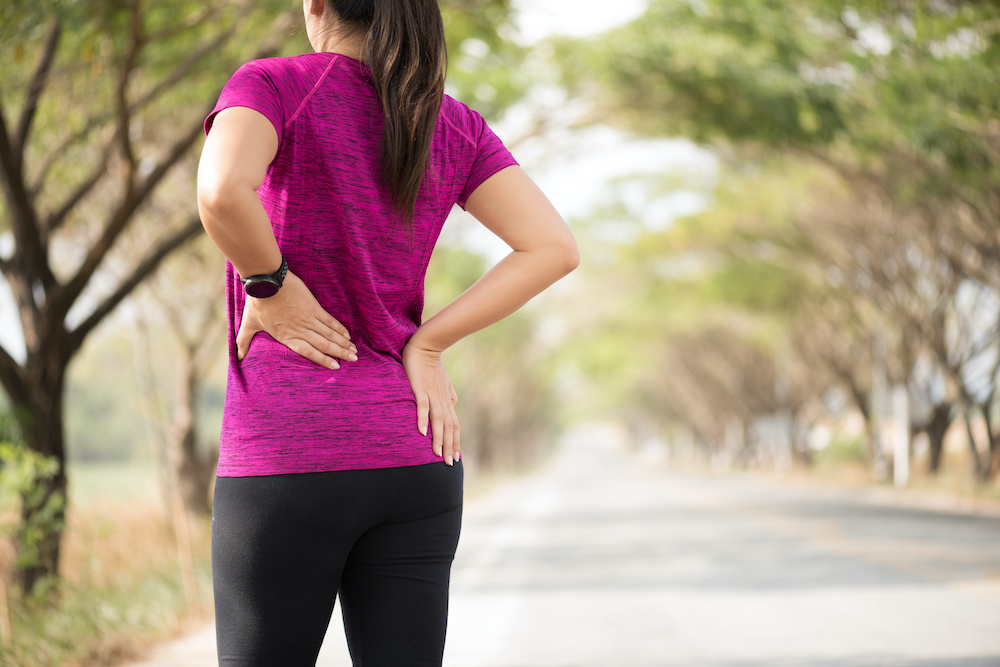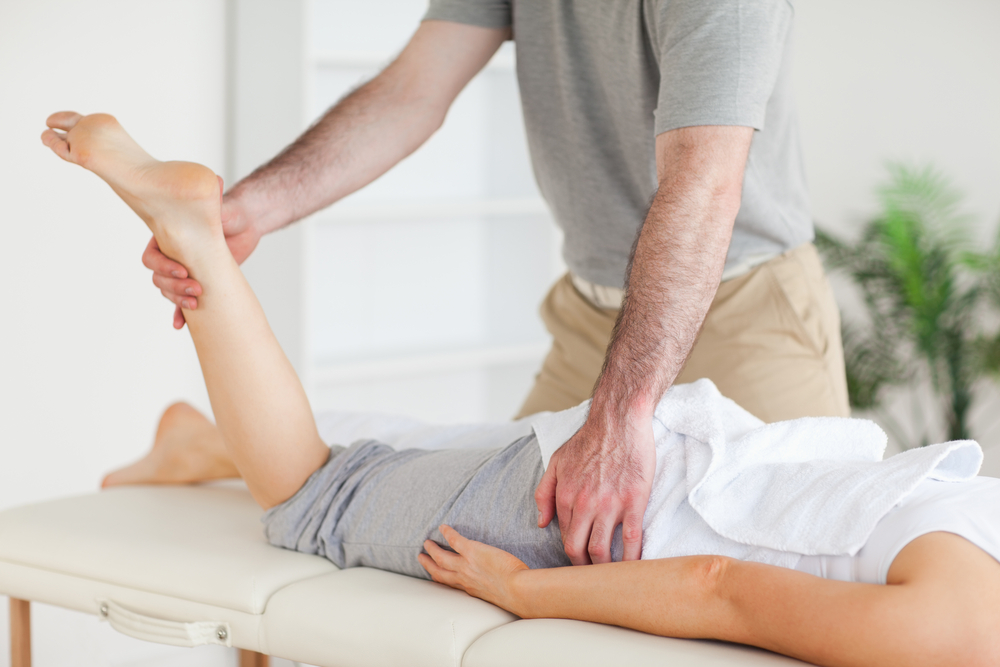What Causes Hip Pain When Walking?
5 min read

Hip pain isn’t just a part of getting old. You don’t have to just suffer through stiffness or hip pain when you’re walking or jogging. There are several things that could contribute to your pain including arthritis, current or past hip injuries, nerve problems, alignment issues, or a combination of these. For example, an old hip injury can increase your chances of arthritis later on. The good news is that most hip pain can be managed or treated with rest, ice, and chiropractic care.
Understanding the most common causes of hip pain in adults and some of the possible treatment options can help you be more involved in the diagnosis and treatment of your pain.
Common Causes of Hip Pain
1. Arthritis of the Hips
While you should consult with your physician to determine the source of your pain, it can help to have a general sense of common issues. Several types of arthritis can cause hip pain.
Osteoarthritis is the most common type of arthritis and the most likely type of arthritis causing your hip pain. It’s caused by wear and tear on the cartilage around the hip joint that slowly wears away, leaving bone rubbing on bone. This is as painful as it sounds and gets worse without treatment. Osteoarthritis is more likely if you’re over age 50, overweight, had past hip injuries, or a family history of osteoarthritis or congenital deformity of the hip (dysplasia).
Other types of arthritis that could cause pain include:
- Rheumatoid arthritis is an autoimmune disease.
- Psoriatic arthritis affects joints and skin.
- Septic arthritis is caused by an infection in the hip joint.
- Ankylosing spondylitis mainly affects the spine but can also cause hip pain.
2. Hip Injuries, Inflammation, or Disease
Any of the following can cause pain now or in the future:
- Tendinitis caused by damage to or irritation of tendons that connect to your hips and legs, often due to overuse
- Bursitis causes irritation, swelling, and inflammation in the connective tissue surrounding the hip joint; more common with repetitive stress or rheumatoid arthritis
- A sprain, or strain, often caused by overuse of hips or legs
- A tear in the cartilage that keeps the hip bone in place and supports it, often due to injury
- Hip dislocation occurs when the thigh bone slips out of the hip socket joint
- A broken or fractured hip
- Osteomyelitis is a localized bone infection caused by bacteria from an injury, surgery, or infection
- Osteonecrosis is the death of bone tissue due to a lack of blood supply, causing the cartilage to collapse. It’s caused by injury, infection, excessive alcohol use, corticosteroids, or disease (Crohn’s disease, lupus, heart disease, or sickle cell disease)
3. Nerve Problems Affecting the Hips
There are a few different conditions that can cause you to have pain in the hips while walking:
- Sciatica, pain that runs through the hip down the leg, is due to a pinched nerve in the lower back. A chiropractor can help identify the cause of the nerve being compressed in the spine.
- Sacroiliitis, nerve damage caused by inflammation where the pelvis bone joins the spine (sacroiliac joint), is often caused by an injury, fall, infection, osteoarthritis, or being overweight
- Meralgia paresthetica is nerve irritation in the outer thigh; often caused by being overweight, tight clothing, too much exercise, or frequently standing for a long time
4. Hip alignment problems
can be caused by walking irregularly. If you have weak muscles in your hips, legs, or knees it can cause an imbalance in the pressure placed on one hip joint. This imbalance can cause pain while walking. Hip alignment problems can also be caused by flat feet or knee injuries.
Treatment Options for Hip Pain
The type of treatment(s) you receive for your hip pain will depend on the cause of it. Some pain goes away with time, such as a slight sprain or pinched nerve. Minor pain can be helped by over-the-counter (OTC) NSAIDs (Aleve, Advil, or aspirin), pain-relief or numbing cream, massage, warm or cold compresses, or muscle relaxers.
Before turning to injections, prescription pain medications, or even surgery, consider seeing a chiropractor first.
Chiropractic Treatments for Hip Pain
Many hip pain sufferers have found relief with chiropractic care. Village Chiropractic’s skilled chiropractors use touch, scans, and physical exams to identify signs of misalignment and diagnose causes of hip pain.
Patient-centered therapies can include:
- Spinal Adjustments - performed by a trained chiropractor, using his/her hands to relieve pressure between each spinal vertebra. Joints and vertebrae are adjusted to their proper, pain-free positions. This stimulates and enhances the healing process in the most non-invasive way. Adjustments can reduce inflammation and pain, realign the spine and hips, and promote healing.
- Spinal decompression - slow and targeted stretching of the spine for 15 to 30 minutes per treatment. At Village Chiropractic we use the Bac-on-Trac system to slowly stretch the spine to relieve pressure on the vertebrae. Several sessions are needed for lasting results. This is often enough for patients to start feeling better and avoid a possible surgery. By reducing the pressure on spinal discs, water and nutrients can surround the discs, promoting healing and reducing pain.
- Cold laser therapy - a Food and Drug Administration-approved treatment. It uses low levels of light to repair damaged cells, stimulate healing and provide pain relief. Village Chiropractic uses the newest generation of cold laser equipment with improved capabilities to produce results. Low-level light is applied directly to the painful area. As your body absorbs the infrared light, an internal reaction causes blood to rush to the painful area. Damaged cells react, and the healing process is enhanced with each treatment. Cold laser therapy works on muscles, ligaments, cartilage, and nerves. Many patients have found relief for pain, inflammation, sprains, tendonitis, bursitis, and muscle spasm pain. Popular with patients because it provides immediate relief that increases with each treatment. It’s quick, non-invasive, and painless. There’s no surgery, drugs, side effects, or recovery time.
- Massage from Village Chiropractic’s trained massage therapist relaxes the right muscles. It helps your adjustments last longer and provides better spinal support.
- Electrical muscle stimulation uses targeted electrical pulses to activate sore muscles, relieve pain, reduce inflammation, reduce muscle spasms and promote healing. Quick and noninvasive, many patients find this method helps reduce hip pain.
Our chiropractors can also recommend exercises to strengthen joints and core muscles. A strong core helps maintain balance and alignment for your back, hips, and legs.
Tips for Managing Hip Pain
Preventing hip pain is far easier than treating it. These hip pain management tips work well for occasional pain and can prevent hip pain from returning after treatments.
- Support and stabilize your hips with comfortable, supportive, low-heel shoes. Try shoe insoles, a knee brace, or a back-support brace to ease hip pain.
- A cane or walking stick provides support and increases your confidence while walking.
- Limit walking up and downstairs.
- Avoid walking or standing on hard surfaces for long periods of time.
- Choose a supportive surface like a rubber mat when you need to stand up to work.
- Work on improving your posture and strengthening core muscles. Correct posture supports your back and evenly distributes pressure on your hips.
- Raise your desk or adjust the height of your computer screen to avoid slouching.
- Avoid sitting on hard surfaces. Sit on a cushion or foam base, but avoid too-soft surfaces like a sofa or bed.
- See your chiropractor for an assessment and treatment plan.
If you’re tired of hip pain while walking, contact Village Chiropractic in The Woodlands today for an appointment. Our results-driven team of trained practitioners uses state-of-the-art, proven therapies and always keeps you at the center of your care.
More from Our Blog on This Topic
6 min read
5 min read




